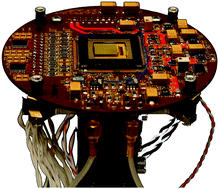Optimization of Ag isotope-ratio precision with a 128-Channel array detector coupled to a Mattauch-Herzog mass spectrograph†
Abstract
Isotope-ratio measurements are necessary in a wide range of applications. The precision of these measurements is of utmost importance because it governs the ability to distinguish differences between samples. Often, simultaneous isotope detection is necessary to reach the precision values needed for an analysis to be conclusive. Furthermore, the more isotope ratios that can be precisely determined at once, the better the chances of distinguishing between samples. Therefore,

- This article is part of the themed collection: 2010 Young Analytical Scientists

 Please wait while we load your content...
Please wait while we load your content...